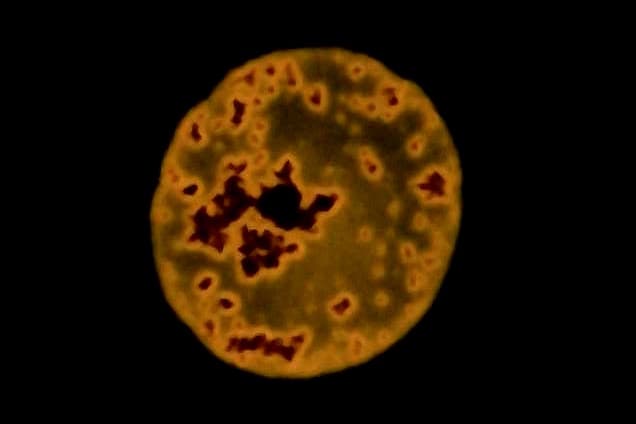While an increasing number of people are becoming concerned about microplastic pollution in their drinking water, it’s one of those things that the average person can’t check for themselves. That could soon change, however, if a new prototype device reaches production.
By definition, microplastics are fragments of plastic smaller than 5 millimeters in diameter.
Found in waterways around the world, they come from a number of sources. These include chunks of floating plastic waste that break down into smaller pieces; products such as toothpaste which contain plastic microbeads; synthetic clothing that sheds fibers while being washed; and car tires that release bits of rubber which make their way into storm sewers.
Researchers are still trying to understand how people’s health may be affected by ingesting the particles in and of themselves. That said, harmful bacteria are often drawn to microplastics, living on or around the particles – and we definitely shouldn’t be eating or drinking those microbes.
Presently, the only methods of counting the number of microplastics in water samples require expensive lab-based equipment operated by trained technicians. Dr. Tianxi Yang and colleagues at Canada’s University of British Columbia (UBC) recently set out to change that.
The result is a small 3D-printed box that contains a wireless digital microscope, a green LED, and a device known as an excitation filter. Machine-learning-based software on a linked smartphone analyzes images transmitted by the microscope.

Peter Yang
Only a tiny amount of water is required (less than one drop), to which a solution of tannic acid, zirconium atoms and rhodamine B is added. When that mixture is exposed to green light from the LED, all of the microplastics present within it fluoresce, making them highly visible.
The smartphone software counts the number of fluorescence-showing pixels in the microscope images, thus allowing it to determine both the size and amount of particles in the sample. Within less than 20 minutes, it provides a readout that can be easily understood by scientists and laypeople alike.
In a test of the technology, the device was used to analyze distilled water that had been boiled and poured into polystyrene cups, then left to cool for 30 minutes. Based on the number of microplastics detected in the samples, it was determined that each cup released “hundreds of millions” of nano-sized particles into the 50 ml (1.7 oz) of water it contained.
While these particular tests were looking for polystyrene particles, the scientists state that the software could be tweaked to detect other plastics such as polyethylene and polypropylene. A paper on the study was recently published in the journal ACS Sensors.
And should you be wondering what a user would do if a commercial version of the device did show that their water was full of microplastics … well, last year UBC announced the development of a plant-based filter that removes almost 100% of such particles from water.
Source: UBC
Source of Article